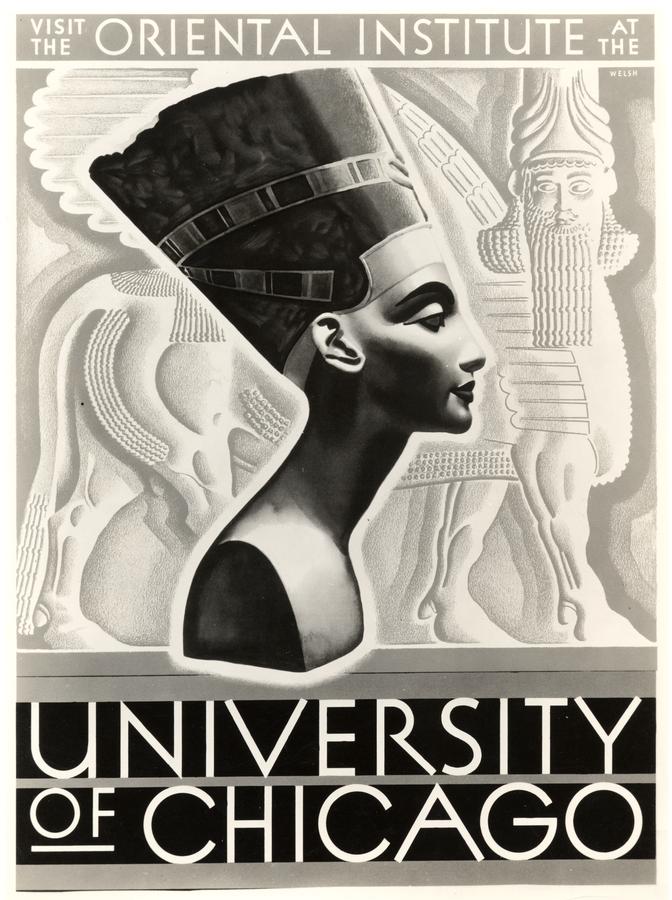This document, and this one are based on a brochure issued in conjunction with the exhibit Sifting the Sands of Time: The Oriental Institute and the Ancient Near East , held at the Oriental Institute October 6, 1991–December 31, 1992.
The chronology of the development of the Oriental Institute's website is documented here.
Thursday, January 31, 2008
Wednesday, January 30, 2008
Possibilities: A rather whacky view
In the late 1980s, the Oriental Institute faculty voted to retrofit the Institute's building with climate control, which was desperately needed for the sake of the artifacts it housed. While it took until 1994 for the University of Chicago to approve the project, it did indeed go ahead. Below is a link to an unimaginably grand building, sort of a Ratner Center on University Street:
http://www.fnrarchitects.com/Oriental%20Institute/index.htm
It's worth tooling around the sidebars on this site, to get the full view.
I am rather glad that this particular direction wasn't built.




http://www.fnrarchitects.com/Oriental%20Institute/index.htm
It's worth tooling around the sidebars on this site, to get the full view.
I am rather glad that this particular direction wasn't built.




Departments: The Tablet Collection
The Oriental Institute Tablet Collection has recently begun a collaboration with the Cuneiform Digital Library Initiative.
Projects: The Persepolis Fortification Archive Project
The Persepolis Fortification Archive Project is a recently established project at the Oriental Institute.
In 1933, Oriental Institute archaeologists working at Persepolis, clearing the ruined palaces of Kings Darius, Xerxes, and their Achaemenid Persian successors, found clay tablets in two small rooms of a bastion in the fortification wall at the edge of the great stone terrace.
Most of the Fortification tablets came to the Oriental Institute in 1936, on loan for study and analysis. The results of long, painstaking work—especially the late Richard T. Hallock’s magisterial analysis of 2,087 Elamite texts—were far-reaching. Individually, the documents are mere records of storage and outlays of food, but as a whole, the Persepolis Fortification Archive shows a broader spectrum of Achaemenid Iranian society than any other source, from the lowliest workers to the king’s own family. The PFA has fundamentally changed every aspect of the study of Achaemenid Iranian languages, art, institutions and history.
The Persepolis Fortification Archive Project is a new phase in recording and distributing the information that brings about these changes, using electronic equipment and media alongside the conventional tool-kits of philology and scholarship.
The public face of the Persepolis Fortification Archive Project, and the news generated by the project an the legal controversy surrounding it, is documented in the Persepolis Fortification Archive Project blog, which operates under the official auspices of the project and of the Oriental Institute. Founded in October 2006, the Persepolis Fortification Archive Project blog is, as far as I know, the first use of a weblog at the Oriental Institute.
In 1933, Oriental Institute archaeologists working at Persepolis, clearing the ruined palaces of Kings Darius, Xerxes, and their Achaemenid Persian successors, found clay tablets in two small rooms of a bastion in the fortification wall at the edge of the great stone terrace.
Most of the Fortification tablets came to the Oriental Institute in 1936, on loan for study and analysis. The results of long, painstaking work—especially the late Richard T. Hallock’s magisterial analysis of 2,087 Elamite texts—were far-reaching. Individually, the documents are mere records of storage and outlays of food, but as a whole, the Persepolis Fortification Archive shows a broader spectrum of Achaemenid Iranian society than any other source, from the lowliest workers to the king’s own family. The PFA has fundamentally changed every aspect of the study of Achaemenid Iranian languages, art, institutions and history.
The Persepolis Fortification Archive Project is a new phase in recording and distributing the information that brings about these changes, using electronic equipment and media alongside the conventional tool-kits of philology and scholarship.
The public face of the Persepolis Fortification Archive Project, and the news generated by the project an the legal controversy surrounding it, is documented in the Persepolis Fortification Archive Project blog, which operates under the official auspices of the project and of the Oriental Institute. Founded in October 2006, the Persepolis Fortification Archive Project blog is, as far as I know, the first use of a weblog at the Oriental Institute.
Labels:
Cuneiform,
Elamite,
Iranian Expedition,
Persepolis
Subscribe to:
Posts (Atom)





 Stumble It!
Stumble It!

